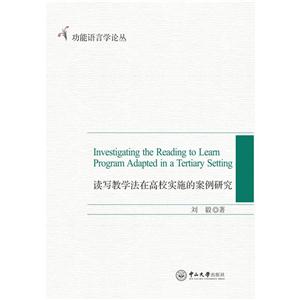
作者:GuofangLi[著]
页数:540页
出版社:上海外语教育出版社
出版日期:2019
ISBN:9787544656528
电子书格式:pdf/epub/txt
内容简介
Foreign Language Teacher Education and Development — Selected Works of Renowned TESOL Experts highlights the works of a number of leading researchers and educators in the TESOL field, aiming to exemplify the diversity and complexity of the ELT field. Languages, Identities, Power, and Cross-cultural Pedagogies in Transnational Literacy Education provide a rich opportunity for readers to explore and reflect on factors that are critical to immigrant students’ language and literacy learning across time and space and the dichotomies between home and school, homeland and new land for immigrant English learners。
作者简介
Guofang Li(李国芳)是加拿大跨国/全球化视角下儿童及青少年语言与语言素质教育方向首席科学家,加拿大不列颠哥伦比亚大学语言及语言素养教育系终身教授。研究方向包括移民子女跨文化、英语作为第二语言师范教育、全球化背景下的语言政策与实践等。本书分三大部分,共23章,收录了作者过去二十多年的学术生涯中发表的精华论文,主要探讨了北美的移民学生语言和读写教育中的一些常见问题和背后成因,针对移民学生英语教学提出了切实的建议举措。
本书特色
本书稿是“世界知名TESOL专家论丛”之一。全书共分三大部分,23章,收录了作者过去20年间发表的精华论文,主要探讨了北美的移民学生语言和读写教育中的一些常见问题和背后成因,针对移民学生英语教学提出了切实的建议举措。
目录
Chapter 1 My Work on Pedagogy of Cultural Reciprocity in
Transnational Language and Literacy Education
Part 1
Culture, Identity, and Literacy: Multilingual Learners in Transnational Contexts
Chapter 2 Understanding ELL literacy from a cultural lens: An Asian perspective
Chapter 3 Second language and literacy learning in school and at home: An ethnographic study of Chinese-Canadian first graders’ experiences
Chapter 4 Biliteracy and trilingual practices in the home context: Case studies of Chinese-Canadian children
Chapter 5 Family literacy and cultural identity: An ethnographic study of a Filipino family in Canada
Chapter 6 Other people’s success: Impact of the “model minority”myth on underachieving Asian students in North America
Chapter 7 Behind the “model minority” mask: A cultural ecological perspective on a high achieving Vietnamese youth’s identity and socio-emotional struggles
Chapter 8 Literacy engagement through online and offline communities outside school: English Language Learners’development as readers and writers
Chapter 9 Low-SES ELLs’ new literacies outside school: Attitudes,access, and agency
Part 2
Social Class, Literacy, and Power: Immigrant Parents Learning Language and Negotiating Schooling in a New Land
Chapter 10 Immigrant language acquisition: An international review
Chapter 11 Home environment and second language acquisition: The importance of family capital
Chapter 12 Race, class, and schooling: Multicultural families doing the hard work of home literacy in America’s inner city
Chapter 13 Literacy, culture, and politics of schooling:Counternarratives of a Chinese Canadian family
Chapter 14 What do parents think? Middle-class Chinese immigrant parents’ perspectives on literacy learning, homework, andschool-home communication
Chapter 15 Poverty and minority children’s education in the US: Case
study of a Sudanese refugee family
Chapter 16 Social class, culture, and Asian social positioning:Rethinking literacy and power in the new millennium
Part 3
Mulitliteracies and Cross-Cultural Pedagogies: Toward Best Approaches to Language and Literacy Instruction
Chapter 17 Subject matters of language, culture, identity, and power
Chapter 18 The role of culture in literacy learning and teaching
Chapter 19 Best approaches to literacy instruction for English language learners: Cultural conflicts and compromises
Chapter 20 Perspectives on struggling English language learners:Case studies of two Chinese-Canadian children
Chapter 21 Reading “the word” and “the world”: Promoting learner agency through an engagement model of literacy instruction
Chapter 22 Promoting teachers of culturally and linguistically diverse (CLD) students as change agents: A cultural approach to professional learning
Chapter 23 Looking Back and Moving Forward: New Directions for ELT in the Era of Superdiversity Collected References















